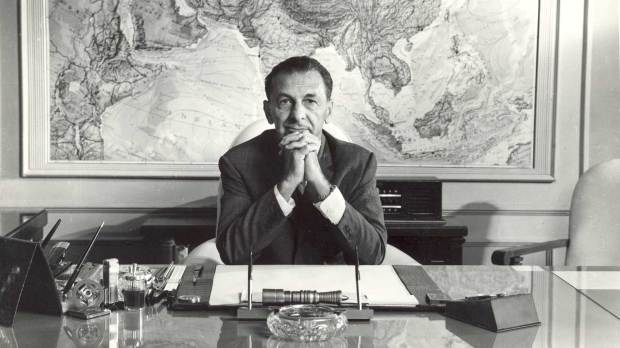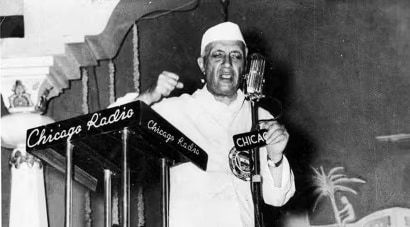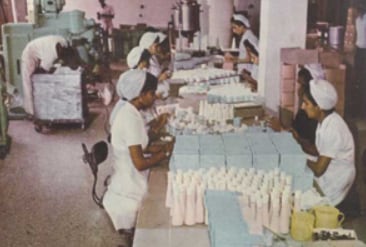Did you know that the history of the beloved Indian cosmetics brand, Lakme, is intertwined with the British colonial rule in India?
Amidst the tumultuous history of British colonial rule in India, the fascinating tale of Lakme’s origins unfolds, linking the struggle for economic independence with the pursuit of beauty. It all began with the British disdain for Indian entrepreneurship during their rule, where they aimed to keep India as a captive market for European products.
The cosmetics industry, which was far more advanced in Europe, particularly caught the attention of the Indian upper class. Even after India gained independence in 1947, the elite continued to splurge on foreign cosmetics, draining the country’s foreign currency reserves.

The brainchild of India’s first Prime Minister Jawarharlal Nehru and JRD Tata
This pressing issue reached the ears of none other than India’s first Prime Minister, Jawaharlal Nehru. Nehru, being a man of refined taste himself, couldn’t let the desire for beauty undermine the nation’s economic future. He devised a radical solution – to produce cosmetics in India.

Early on, when Independent India’s nascent economy was still getting off the ground, the Prime Minister was worried about the amount of money leaving the nation when Indian women splurged on imported cosmetics. There weren’t many high-quality personal care goods made in India after independence, and there weren’t many Indian producers either. J.R.D. Tata, a close friend of Pandit Nehru’s, was urged to establish a business to produce cosmetics in order to conserve valuable foreign currency.
He persuaded Tata to set up a company that would manufacture fine cosmetics tailored for the Indian skin and climate – thus, Lakmé was born.

The establishment of Lakmé
In 1953, TOMCO saw an opportunity in the lack of indigenous cosmetics in the Indian market and partnered with two reputed French firms – Robert Piguet and Renoir – to launch Lakmé. The French collaborators contributed their expertise in perfume bases for a fee, making it a true “Make in India” initiative.
The brand officially launched in 1952, and its journey was not without challenges, as it had to compete with established international cosmetic giants.

Lakme’s success was powered by the vision and dedication of J.R.D. Tata, who firmly believed in promoting Indian industries. The brand understood the unique beauty needs of the Indian market, unlike its foreign competitors, who primarily catered to Western standards. Lakme’s focus on Indian skin tones and climate struck a chord with the Indian consumers, establishing a loyal customer base.

From lakshmi to Lakmé
The name “Lakmé” holds a fascinating backstory. The French collaborators were tasked with suggesting a name that would combine elements of both countries and infuse an Indian touch with a French flair. They settled on “Lakmé,” inspired by an opera that was then popular in Paris. The opera, set amidst oriental settings, forests, and temples, was named after Goddess Lakshmi, the Hindu goddess of wealth and beauty.
Simone Tata, a Swiss-born Indian businesswoman, played a pivotal role in Lakme’s ascent. She married Naval H. Tata and settled permanently in Mumbai, becoming a part of the Tata family. Simone joined the Lakme Board in 1962 and rose to become its Chairperson in 1982. Her leadership and acumen helped shape the brand’s trajectory.
Growth and transformation: Simone Tata’s influence
Lakmé began its operations in a small rented space at Peddar Road, offering an extensive range of personal care products for women. As the company grew rapidly, it sought larger premises and eventually moved into TOMCO’s Sewri factory, significantly expanding its manufacturing capacity. The company’s progress was accelerated when Simone Tata, wife of Naval H. Tata, took over as the managing director in 1961. With her aesthetic sense and business acumen, she transformed Lakmé into an iconic brand.
Simone Tata was the stepmother of JRD Tata.
The Power of marketing and distribution
A robust sales network and well-thought-out marketing strategies ensured Lakmé’s success in urban markets across India. The company extended its reach to towns with a population of 20,000 or more, offering a wide range of makeup, skincare, and toiletries for women. It later ventured into men’s products as well.
Lakmé’s success was no accident. With a well-established sales network and strategic marketing initiatives, the brand garnered immense popularity in urban markets across India. The company’s product range, spanning makeup, skincare, and toiletries for women, captured the hearts of consumers nationwide.
Innovation and Quality: Lakmé’s Commitment to Excellence
Lakmé’s has now become a well-established brand now. The business serves as the official title sponsor of Mumbai’s biannual Lakme Fashion Week (LFW).

Kareena Kapoor, Kajol Devgn, Shraddha Kapoor, and Ananya Pandey serve as brand ambassadors for Lakmé.
Changing landscape: Lakmé’s merger with HUL
As Lakmé continued to flourish, TOMCO merged with Hindustan Unilever in 1993. Subsequently, Lakmé formed a joint venture with Hindustan Unilever, which led to the divestment of its stake in 1998, selling its brands to Hindustan Unilever. Despite these changes, Lakmé retained its position as a dominant force in the Indian cosmetics market, consistently setting new standards and commanding a significant market share.
Despite the corporate changes, Lakmé continues to be a symbol of beauty and grace in India. With a rich heritage and an unwavering commitment to quality, the brand sets new benchmarks and continues to be a beloved choice for millions of Indian women.

The remarkable history of Lakme serves as a surprising reminder of how beauty and nation-building intersected during a time when economic independence was paramount. It is a tale of ingenuity, innovation, and national pride, woven together by the efforts of visionaries like Nehru, J.R.D. Tata, and Simone Tata. From defying colonial constraints to embracing indigenous beauty, Lakme’s journey is a true Indian success story.








